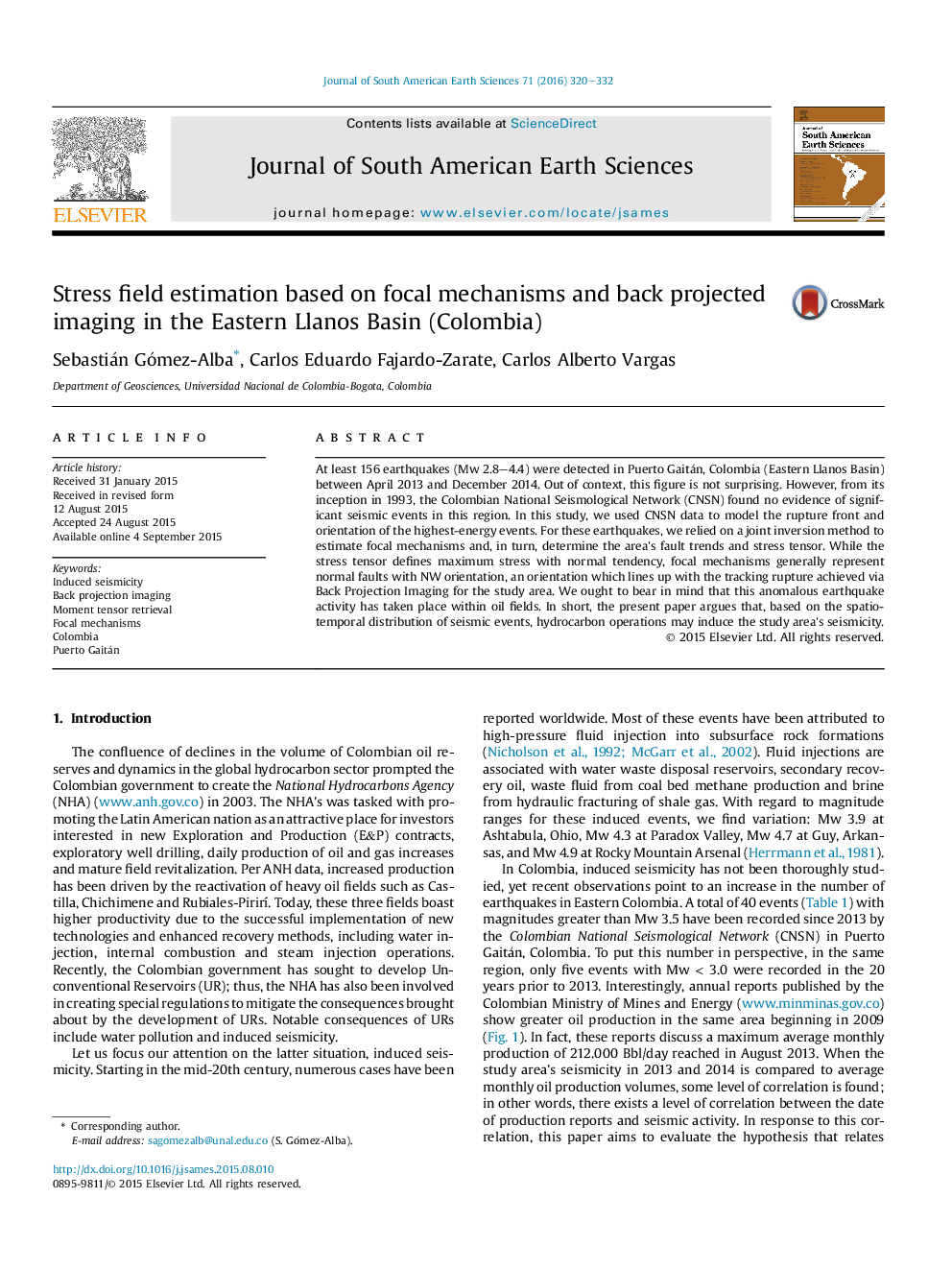| Article ID | Journal | Published Year | Pages | File Type |
|---|---|---|---|---|
| 6431282 | Journal of South American Earth Sciences | 2016 | 13 Pages |
â¢We modeled the track rupture front and orientation of the most energetic events in Puerto Gaitan, Colombia during 2014.â¢We applied the Moment Tensor Retrieval for estimating focal mechanisms.â¢We applied a joint inversion focal mechanism to find the stress tensor in the area.â¢Based on spatial and temporal distribution, we hypothesize that seismicity is induced by oil operations in the study area.
At least 156 earthquakes (Mw 2.8-4.4) were detected in Puerto Gaitán, Colombia (Eastern Llanos Basin) between April 2013 and December 2014. Out of context, this figure is not surprising. However, from its inception in 1993, the Colombian National Seismological Network (CNSN) found no evidence of significant seismic events in this region. In this study, we used CNSN data to model the rupture front and orientation of the highest-energy events. For these earthquakes, we relied on a joint inversion method to estimate focal mechanisms and, in turn, determine the area's fault trends and stress tensor. While the stress tensor defines maximum stress with normal tendency, focal mechanisms generally represent normal faults with NW orientation, an orientation which lines up with the tracking rupture achieved via Back Projection Imaging for the study area. We ought to bear in mind that this anomalous earthquake activity has taken place within oil fields. In short, the present paper argues that, based on the spatiotemporal distribution of seismic events, hydrocarbon operations may induce the study area's seismicity.
